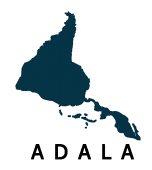Del calcolítico al bronce antiguo en Siria-Palestina: revisando el modelo de la segunda urbanización
DOI:
https://doi.org/10.35305/cl.vi18.60Palavras-chave:
calcolítico, bronce antiguo, Siria, Palestina, urbanizaciónResumo
Hasta hace pocos años, se sostenía que en Siria habín existido dos fases de urbanización, la primera durante la segunda mitad del IV milenio, y la siguiente mediados del III milenio, la cual incluía también la región de Palestina. A partir de esta situación se planteaba una diferencia estructural entre ambas urbanizaciones, estando la primera más vinculada a la agricultura de irrigación del Sur de la Mesopotamia y a la organización del templo, y la segunda a la agricultura de secano y a la organización del palacio. Sin embargo, excavaciones recientes indican que durante la primera mitad del IV milenio ya existían en Siria importantes asentamientos urbanos y que los mismos también aparecerán de manera más temprana tanto en Líbano como en Palestina. El objetivo de este artículo es demostrar que Siria compartía las mismas tendencias hacia la urbanización que otras regiones del Cercano Oriente, debido a los múltiples contactos que tenían desde antaño, pero que su ritmo dependía de condiciones locales, por lo que en lugar de dos fases preferimos hablar de un mismo proceso de urbanización, cuya culminación se produjo recién a mediados de la Edad del Bronce Antiguo.
Downloads
Referências
Adams, Robert McC. (1965) Land Behind Baghdad. A History of Settlement on the Diyala Plains. Chicago: The University of Chicago Press.
Adams, Robert McC. (1966) The Evolution of Urban Society. Early Mesopotamia and Prehispanic Mexico. Chicago: Aldine.
Akkermans, Peter M. M. G. and Schwartz, Glenn M. (2003) The Archaeology of Syria. From Complex Hunter-Gatherers to Early Urban Societies (c. 16,000-300 BC). Cambridge: Cambridge University Press.
Algaze, Guillermo (2004[1993]) El sistema-mundo de Uruk. La expansión de la primera civilizaci´on mesopot´amica. Barcelona: Bellaterra.
Archi, Alfonso and Biga, María G. (1982) Testi amministrativi di vario contenuto (Archivio L. 2769, TM.75.G.3000-4101). Rome: La Sapienza (Archivi Reali di Ebla, Testi III).
Baldi, Johnny Samuele (2012) “Coba Bowls, Mass Production and Social Change in Post-Ubaid Times”, en: Marro, C. (ed.) After the Ubaid. Interpreting Change from the Caucasus to Mesopotamia at the Dawn of Urban Civilization (4500-3500 BC). Istambul: Institut Français d’Etudes Anatóliennes Georges Dumézil, pp. 393-416.
Benati, Giacomo (2018) “The Construction of Large-scale Networks in Late Chalcolithic Mesopotamia: Emergent Political Institutions and Their Strategies”, en: Domenici, D. and Marchetti, N. (eds.) Urbanized Landscapes in Early Syro-Mesopotamia and Prehispanic Mesoamerica. Papers of a CrossCultural Seminar held in Honor of Robert McCormick Adams. Wiesbaden: Harrassowitz, pp. 103-143.
Ben-Tor, Amnon (1992) “The Early Bronze Age”, en: Ben-Tor, A. (ed.) The Archaeology of Ancient Israel. New Haven – London: Yale University Press, pp. 81-125. Blanton, Richard E., Feinman, Gary M, Kowalewski, Stephen A. and Peregrine, Peter N. (1996) “A Dual-Processual Theory for the Evolution of Mesoamerican Civilization”, Current Anthropology 37: 1-14.
Butterlin, Pascal (2018) “Princes marchands d’Uruk? L’expansion urukéenne en question (Etudes proto-urbaines 5)”, en: Domenici, D. and Marchetti, N. (eds.) Urbanized Landscapes in Early Syro-Mesopotamia and Prehispanic Mesoamerica. Papers of a Cross-Cultural Seminar held in Honor of Robert McCormick Adams. Wiesbaden: Harrassowitz, pp. 71-101.
Campagno, Marcelo (2007) El origen de los primeros estados. La “revolución urbana” en América precolombina. Buenos Aires: Eudeba.
Campagno, Marcelo (2015) “De la pertinencia del concepto de Estado para el pensamiento de las sociedades antiguas. Reflexiones sobre las capacidades de hacer del Estado egipcio antiguo”, Pasado Abierto 1: 21-37.
Childe, Vere Gordon (1950) “The Urban Revolution”, The Town Planning Review 21(1): 3-17.
Childe, Vere Gordon (1997[1936]) Los orígenes de la civilización. México D. F.: Fondo de Cultura Económica.
Cia lowicz, Krzysztof M., Yekutieli, Yuval and Czarnowicz, Marcin (eds.) (2016) Tel Erani I. Preliminary Report of the 2013-2015 Excavations. Kraków: Wydawnictwo Alter.
Cooper, Lisa (2006) Early Urbanism on the Syrian Euphrates. Londres: Routledge.
Crawcour, E. Sidney (1997) “Industrialization and Technological Change”, en: Kamamura, K. (ed.) The Economic Emergence of Modern Japan. Cambridge: Cambridge University Press, pp. 50-115.
Damerow, Peter (2006) “The Origins of Writing as a Problem of Historical Epistemology”, Cuneiform Digital Library Journal 2006(1): 1-10.
Davies, John K. (1997) “The ‘Origins of the Greek polis’. Where Should Be We looking?”, en: Mitchell, L. G. and Rhodes, P. J. (eds.) The Development of the Polis in Archaic Greece. Londres: Routledge, pp. 24-38.
Di Bennardis, Cristina (2013) “La centralización del poder político y el Estado en las sociedades antiguo-orientales: reflexiones sobre teorías e interpretaciones”, en: Di Bennardis, C., Ravenna, E. and Milevski, I. (eds.) Diversidad de formaciones políticas en Mesopotamia y el Cercano Oriente. Organización interna y relaciones interregionales en la Edad del Bronce. Barcelona: Publicacions i Edicions de la Universitat de Barcelona, pp. 15- 40.
Eisenberg, Emanuel (1996) “Tel Shalem: Soundings in a Fortified Site of the Early Bronze Age IB”, ‘Atiqot 30: 1-24.
Arroyo, Fernando (2017) “Proyectiles de honda: ¿Tensiones y conflictos en la protohistoria del Próximo Oriente?”, Antiguo Oriente 15: 223-241.
Ferguson, Niall (2003) “British Imperialism Revisited: The Costs and Benefits of ‘Anglobalization’”, Historically Speaking 4(4): 21-27.
Fischer, Peter M. (2002) “Egyptian-Transjordanian Interaction during Predynastic and Protodynastic Times: The Evidence from Tell Abu alKharaz, Jordan Valley”, en: Van den Brink, E. C. M. and Levy, T. (eds.) Egypt and the Levant. Interrelations from the 4th through the Early 3rd Millennium B.C.E. Londres: Leicester University Press, pp. 323–333.
Fleming, Daniel (2004) Democracy’s Ancient Ancestors. Mary and Early Collective Governance. Cambridge: Cambridge University Press.
Forest, Jean-Daniel (2005) “The State: The Process of State Formation as Seen from Mesopotamia”, en: Pollock, S. and Bernbeck, R. (eds.) Archaeologies of the Middle East. Critical Perspectives. Malden: Blackwell, pp. 184-206.
Frangipane, Marcela (2010) “Politics, Economy and Political Economy in Early Centralised Societies: Theoretical Debate and Archaeological Evidence”, en: Frangipane, M. (ed.) Economic Centralisation in Formative States. The Archaeological Reconstruction of the Economic System in 4th Millennium Arslantepe. Rome: La Sapienza, pp. 11-22.
Frangipane, Marcela (2018) “Different Trajectories in State Formation in Greater Mesopotamia: A View from Arslantepe (Turkey)”, Journal of Archaeological Research 26(1): 3-63.
Garfinkel, Yosef and Ben-Shlomo, David (2009) Sha’ar Hagolan 2. The Rise of Urban Concepts in the Ancient Near East. Jerusalem: The Hebrew University of Jerusalem.
Garfinkel, Yosef, Ben-Shlomo, David and Kuperman, Tali (2009) “Large-scale Storage of Grain Surplus in the Sixth Millennium BC: The Silos of Tel Tsaf”, Antiquity 83: 309-325.
Gates, Charles (2011) Ancient Cities. The Archaeology of Urban Life in the Ancient Near East and Egypt, Greece and Rome. Londres: Routledge.
Genz, Hermann (2012) “The Northern Levant”, en: Potts, D. T. (ed.) A Companion to the Archaeology of the Ancient Near East, Volume I. Malden: Wiley-Blackwell, pp. 607-628.
Getzov, Nimrod (2006) The Tel Bet Yerah 1995 Excavations. Jerusalem: Israel Antiquities Authority. Gibson, McG., et al. (2002). “First Season of Syrian-American Investigations at Hamoukar”. Iraq 64: 45-68.
Gil Fuensanta, Jesús (2017) “Posibles contactos con Mesopotamia, Egipto y Anatolia durante el Bronce Antiguo I del Levante sur”, en: Milevski, I.; Monti, L. y Jaruf, P. (eds.) Si un Hombre desde el Sur... / Šumma awīlum ina šūtim... Escritos de Alumnos, Colegas y Amigos en Homenaje ˇ a Bernardo Gandulla. Buenos Aires: Facultad de Filosofía y Letras, Universidad de Buenos Aires, pp. 83-128.
Greenberg, Raphael (2001) “EB II-III Palestinian Cylinder Seal Impressions and the North Canaanite Metallic Jar”, en: Wolff, S. (ed.) Studies in the Archaeology of Israel and Neighboring Lands in Memory of Douglas L. Esse. Chicago – Atlanta: The Oriental Institute – American Schools of Oriental Research, pp. 175-188.
Hansen, Mogens Herman (1995) “Kome. A Study in How the Greeks Designated and Classified Settlements Which were not poleis”, en: Hansen M. H. and Raaflaub, K. (eds.) Studies in the Ancient Greek Polis. Stuttgart: Franz Steiner Verlag, pp. 45-81.
Hansen, Mogens Herman (2000) A Comparative Study of Thirty City State Cultures. An Investigation Conducted by the Copenhagen Polis Center. Copenhagen: Kongelige Danske Videnskabernes Selskab.
Harmanşah, Ömür (2013) Cities and the Shaping of Memory in the Ancient Near East. Cambridge: Cambridge University Press.
Herzog, Ze’ev (1997) Archaeology of the City. Urban Planning in Ancient Israel and its Social Implications. Tel Aviv: Emery – Claire Yass Archaeology Press.
Ismail, Farouk, Sallaberger, Walther, Talon, Phillipe and Van Lerberghe, Karel (1996) Administrative Documents from Tell Beydar (Seasons 1993-1995). Turnhout: Brepols (Subartu II).
Kerner, Susanne (2010) “Craft Specialization and its Relation with Social Organization in the Late 6th to Early 4th Millennium BCE of the Southern Levant”, Paléorient 36(1): 179-198.
Lawrence, Dan and Ricci, Andrea (2016) “Long-Term Settlement Trends in the Birecik-Carchemish Sectors”, en: Wilkinson, T. J., Peltenburg, E. and Wilkinson, E. B. (eds.) Carchemish in Context. The Land of Carchemish Project, 2006-2010. Oxford: Oxbow Books, pp. 38-67.
Leick, Gwendolyn (2002[2001]) Mesopotamia. La invenci´on de la ciudad. Barcelona: Paidos.
Liverani, Mario (2006[1998]) Uruk. La primera ciudad. Barcelona: Bellaterra.
Liverani, Mario (2014[2013]) Imaginar Babel. Dos siglos de estudios sobre la ciudad oriental antigua. Barcelona: Bellaterra.
Lyonnet, Bertille (2009) “Who Lived in the Third Millennium ‘Round Cities’ of Nothern Syria?”, en: Szuchman, J. (ed.) Nomads, Tribes, and the State in the Ancient Near East. Cross-Disciplinary Perspectives. Chicago: The Oriental Institute of the University of Chicago, pp. 179-200.
Manzanilla, Linda (1986) La constitución de la sociedad urbana en Mesopotamia. México D. F.: Universidad Nacional Autónoma de México.
Marcus, Joyce and Sabloff, Jeremy A. (eds.) (2008) The Ancient City. New Perspectives on Ancient Urbanism. Santa Fe: School for Advanced Research Press.
Margueron, Jean-Claude (1996) “Mari, reflet du monde syro-m´esopotamien au IIIe mill´enaire”, Akkadica 98: 11-30.
Margueron, Jean-Claude (2000) “Mari et le Khabur”, en: Rouault, O. and W¨afler, M. (eds.) La Djézir´e et l’Euphrate syrien de la protohistoire à la fin du IIe millénaire av. J.-C. Turnhout: Brepols (Subartu VII), pp. 99-110.
McMahon, Augusta and Oates, Joan (2007) “Excavations at Tell Brak 2006-2007”, Iraq 69: 147-171.
McMahon, Augusta, Soltysiak, Arkadiusz and Webber, Jill (2011) “Late Chalcolithic Mass Graves at Tell Brak, Syria, and Violent Conflict during the Growth of Early City States”, Journal of Field Archaeology 36(3): 201-220.
Mellaart, James (1988) “El sentido común vs. la teoría tradicional en la interpretación del desarrollo cultural del Cercano Oriente antiguo”, en: Manzanilla, L. (ed.) Coloquio V. Gordon Childe. Estudios sobre las revoluciones neolítica y urbana. México D.F.: Universidad Nacional Autónoma de México, pp. 283-292.
Milevski, Ianir and Getzov, Nimrod (2014) “‘En Zippori. Preliminary Report”. Hadashot Arkheologyiot – Excavations and Survyes in Israel 126. Disponible en http://www.hadashot-esi.org.il/Report_Detail_Eng.aspx? id=13675
Milevski, Ianir et al. (2019). “Tel Erani, Israel: reporte de la campaña arqueológica de 2018 y sus antecedentes”. Revista del Instituto de Historia Antigua Oriental 20: 5-22.
Nichols, Deborah L. and Charlton, Thomas H. (eds.). (1997) The Archaeology of City-States. Cross-Cultural Approaches. Washington D. C.: Smithsonian Institution Press.
Nissen, Hans J. (1988) “Reconsideración sobre la revolución urbana en Mesopotamia”, en: Manzanilla, L. (ed.) Coloquio V. Gordon Childe. Estudios sobre las revoluciones neolítica y urbana. México D.F.: Universidad Nacional Autónoma de México, pp. 309-316.
Oates, Joan et. al. (2007). “Early Mesopotamian Urbanism: A New View from the North”, Antiquity 81: 585-600.
Paz, Yitzhak (2018) Leviah. An Early Bronze Age Fortified Town in the Megalithic Landscape of the Golan. Jerusalem: Ostracon.
Pfoh, Emanuel (2011) “De la relevancia de los conceptos de ‘sociedad estatal’, ‘ciudad-Estado’ y ‘Estado tribal’ en Siria-Palestina”, en: Campagno, M., Gallego, J. y García Mac Gaw, C. G. (eds.) El Estado en el Mediterráneo antiguo. Egipto, Grecia, Roma. Buenos Aires: Miño y Dávila, pp. 81-104.
Postgate, J. Nicholas (1999[1992]) La Mesopotamia arcaica. Sociedad y economía en el amanecer de la historia. Madrid: Akal.
Redman, Charles L. (1990[1978]) Los orígenes de la civilización. Desde los primeros agricultores hasta la sociedad urbana en el Próximo Oriente. Barcelona: Crítica.
Regev, J. et. al. (2012). “Chronology of the Early Bronze Age in the Southern Levant: New Analysis for a High Chronology”, Radiocarbon 54(3- 4): 525–566.
Roodenberg, Jacob (1979-80) “Sondage des niveaux n´eolithiques de Tell es Sinn, Syrie”, Anatolica 7: 21-33.
Sallaberger, Walther (2007) “From Urban Culture to Nomadism: A History of Upper Mesopotamia in the Late Third Millennium”, en: Kuzucuoǧlu, C. and Marro, C. (eds.) Sociétés humaines et changement climatique à la fin du troisième mill´enaire: une crise a-t-elle eu lieu en Haute Mésopotamie?, Istambul: Institut Français d’Etudes Anatoliennes Georges Dumézil, pp. 417-456.
Scheidel, Walter (2013) “Studying the State”, en: Bang, P. F. and Scheidel, W. (eds.) The Oxford Handbook of the State in the Ancient Near East and Mediterranean. New York: Oxford University Press, pp. 5-57.
Schloen, J. David (2001) The House of the Father as Fact and Symbol. Patrimonialism in Ugarit and the Ancient Near East. Winona Lake, Indiana: Eisenbrauns.
Schmandt-Besserat, Denise (1996) How Writing Come About. Austin: University of Texas Press.
Service, Elman (1984[1975]) Los orígenes del Estado y de la civilización. El proceso de la evolución cultural. Madrid: Alianza.
Shalev, Omer (2017) “The Urbanisation Process in Early Bronze Canaan: A View from Tel Erani”, en: Miszk, L. and Wac lawik, M. (eds.) The Land of Fertility II: The Southeast Mediterranean from the Bronze Age to the Muslim Conquest. Cambridge: Cambridge Scholars Publishing, pp. 37- 67.
Sherratt, Andrew G. (1981) “Plough and Pastoralism: Aspects of the Secondary Products Revolution”, en: Hodder, I., Isaac, G. and Hammond, N. (eds.) Patterns of the Past. Studies in Honor of David Clarke. Cambridge: Cambridge University Press, pp. 261-305.
Smith, Monica L. (ed.). (2003) The Social Construction of Cities. Washington D. C.: Smithsonian Institution Press.
Storey, Glenn R. (ed.). (2006) Urbanism in the Preindustrial World. Cross-Cultural Approaches. Tuscaloosa: The University of Alabama Press.
Van de Mieroop, Marc (1997) The Ancient Mesopotamian City. Clarendon Press: Oxford.
Van Loon, Maurits N. (ed.). (1988) Hamman et-Turkman I. Istanbul: Nederlands Historisch-Archaeologish Instituut.
Weber, Max (1944[1922]) Economía y sociedad. Esbozo de Sociología comprensiva. México D.F. – Buenos Aires: Fondo de Cultura Económica.
Weber, Max (1967[1919]) El político y el científico. Madrid: Alianza.
Weiss, Harvey (1986) “Introduction: The Origins of Cities in Dry-Farming Syria and Mesopotamia in the Third Millennium B.C.”, en: Weiss, H. (ed.) The Origins of Cities in Dry-Farming Syria and Mesopotamia in the Third Millennium B.C. Guilford, Connecticut: Four Quarters Publishing, pp. 1-7.
Wengrow, David (2008) “Prehistories of Commodity Branding”, Current Anthropology 49(1): 7-34.
Wilkinson, T. et. al. (2014) “Contextualizing Early Urbanization: Settlement Cores, Early States and Agro-Pastoral Strategies in the Fertile Crescent during the Fourth and Third Millennia BC”, Journal of World Prehistory 27: 43-109.
Yoffee, Norman (1993a) “Too Many Chiefs’ (or Safe Texts for the 90’s)”, en: Yoffee, N. and Sherratt, A. (eds.) Archaeological Theory. Who Sets the Agenda? Cambridge: Cambridge University Press, pp. 60-78.
Yoffee, Norman (1993b) “Mesopotamian Interactions Spheres”, en: Yoffee, N. and Clark, J. J. (ed.) Early Stages in the Evolution of Mesopotamian Civilization. Soviet Excavations in Northern Iraq. Tukson – Londres: The University of Arizona Press, pp. 257-269.
Yoffee, Norman (ed.). (2015) Early Cities in Comparative Perspective, 4000 BCE – 1200 CE. Cambridge: Cambridge University Press (The Cambridge World History, Vol. III).
Yoffee, Norman and Terrenato, Nicola (2015) “Introduction: A History of the Study of Early Cities”, en: Yoffee, N. (ed.) Early Cities in Comparative Perspective, 4000 BCE – 1200 CE. Cambridge: Cambridge University Press (The Cambridge World History, Vol. III), pp. 1-24.
York, Abigail M. et. al. (2011) “Ethnic and Class Clustering through the Ages: A Transdisciplinary Approach to Urban Neighbourhood Social Patterns”, Urban Studies 48(11): 2399-2415
Downloads
Publicado
Como Citar
Edição
Seção
Licença
Copyright (c) 2019 Claroscuro. Revista del Centro de Estudios sobre Diversidad Cultural

Este trabalho está licenciado sob uma licença Creative Commons Attribution-NoDerivatives 4.0 International License.

















 Centro de Estudios sobre Diversidad Cultural
Centro de Estudios sobre Diversidad Cultural

